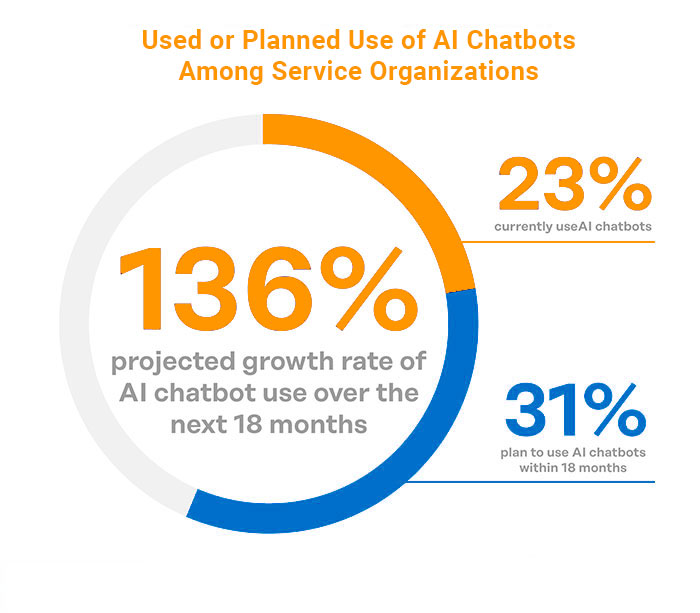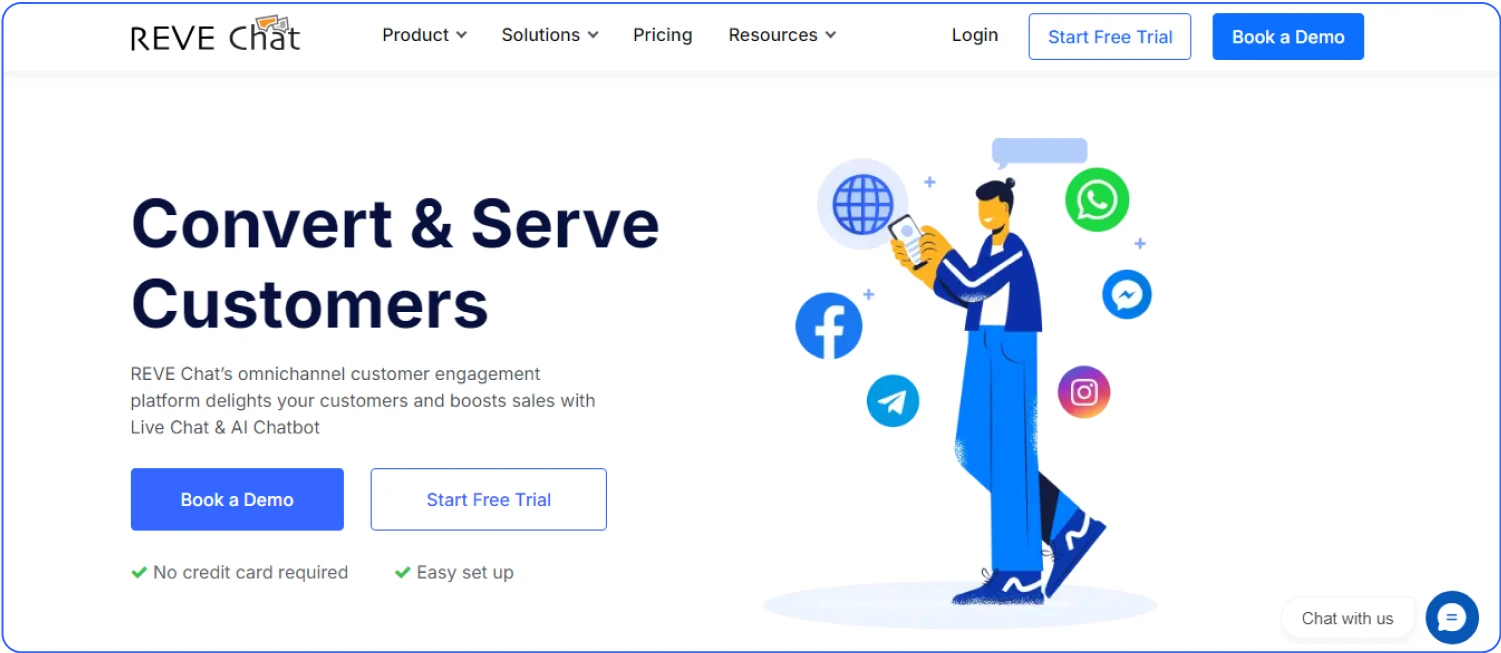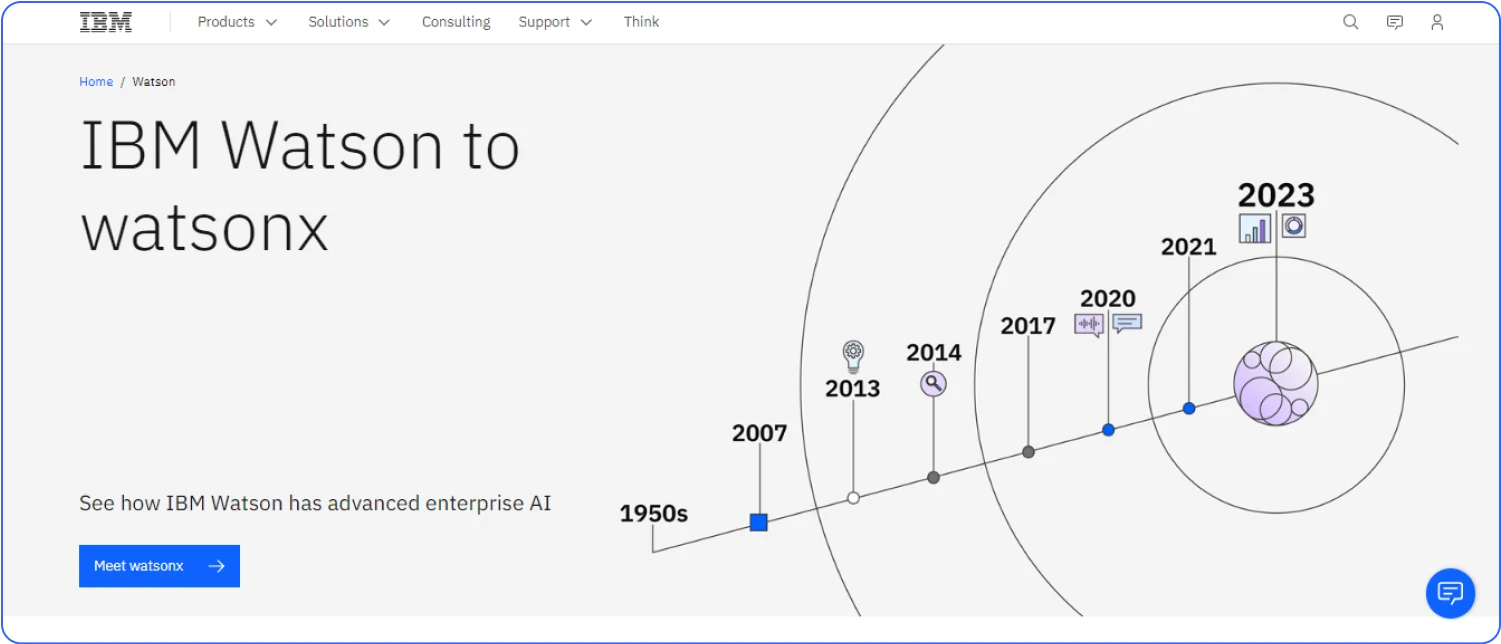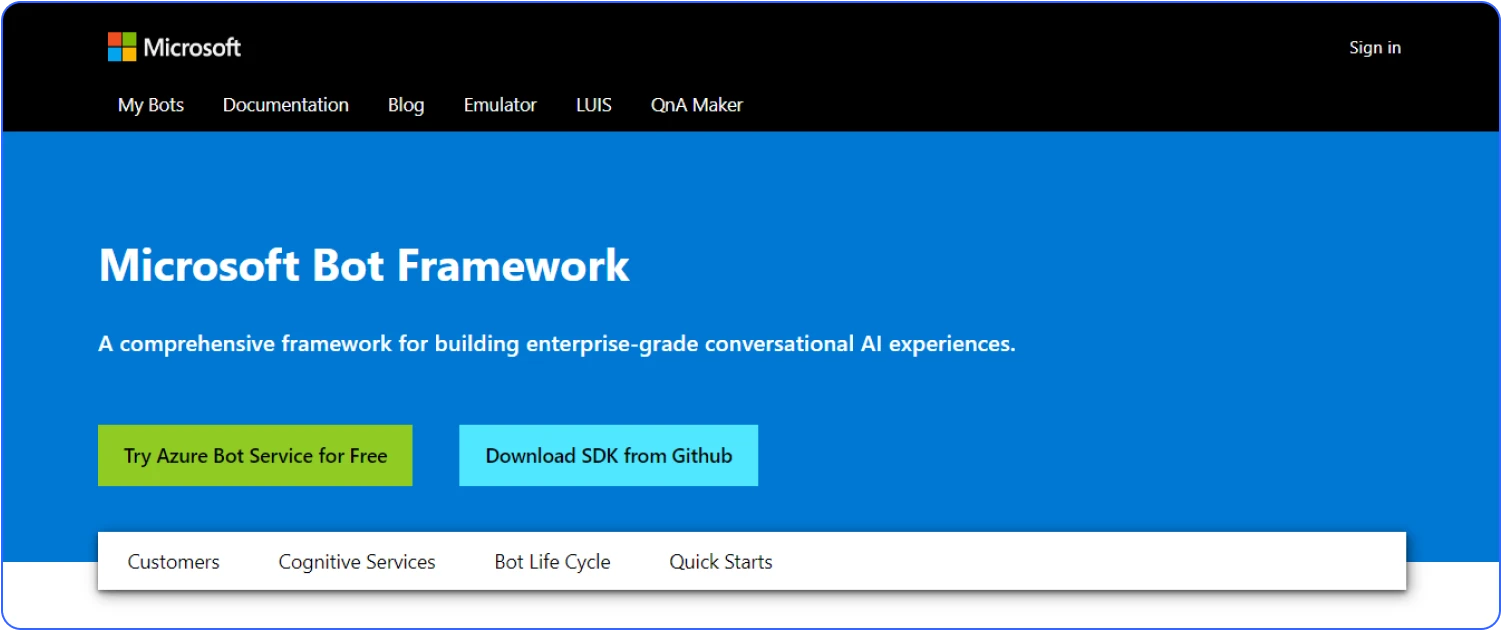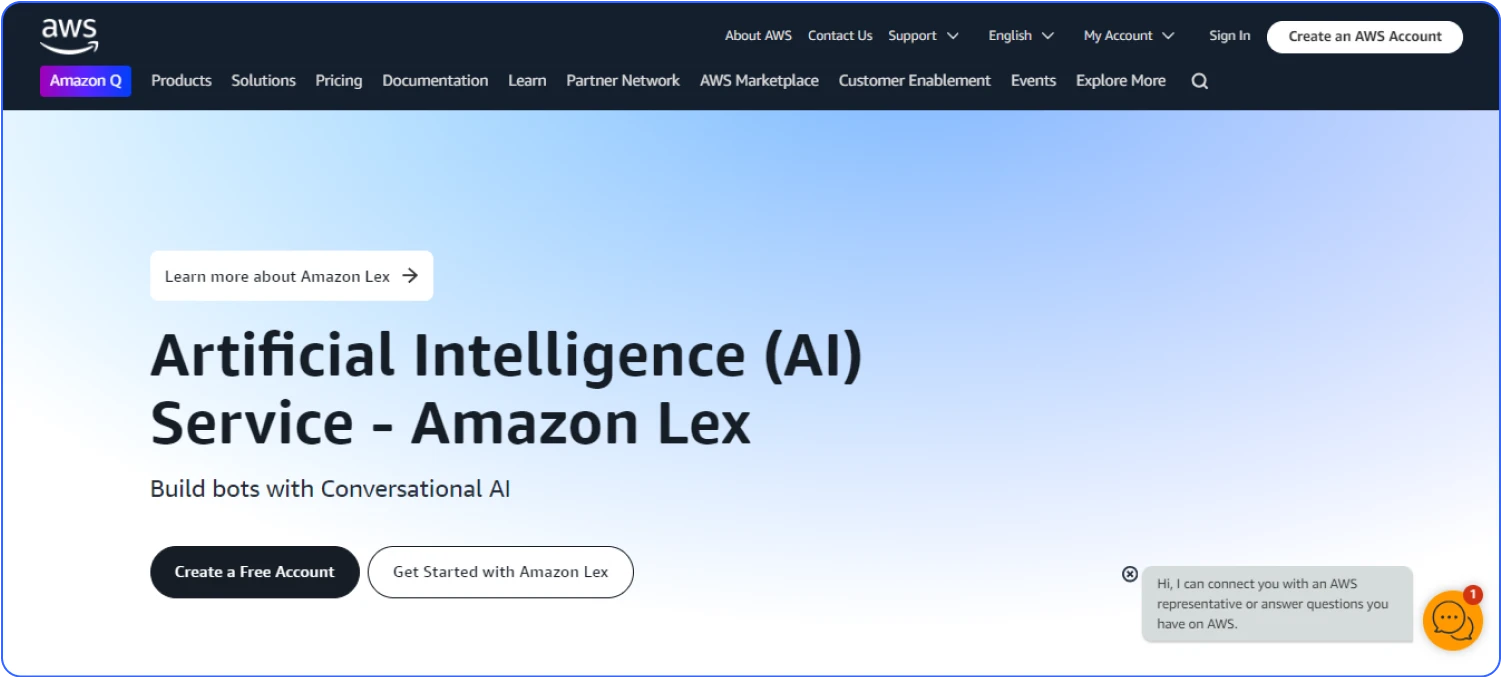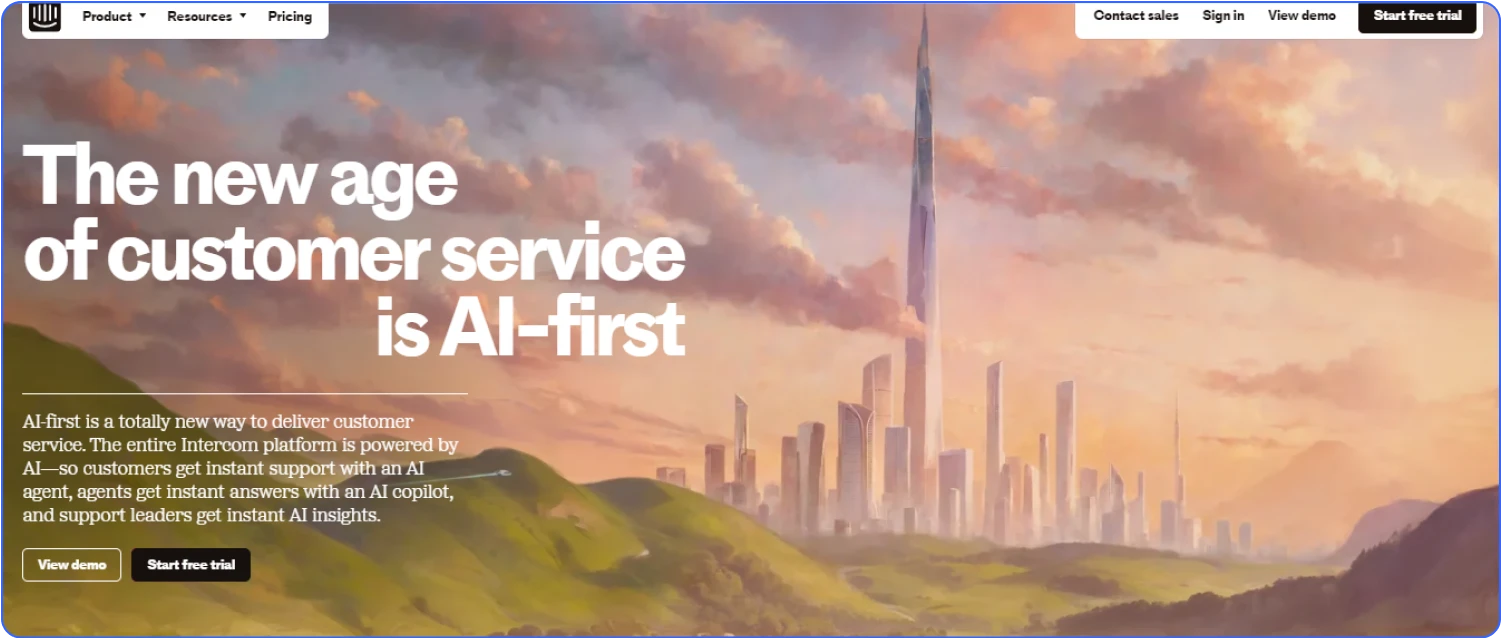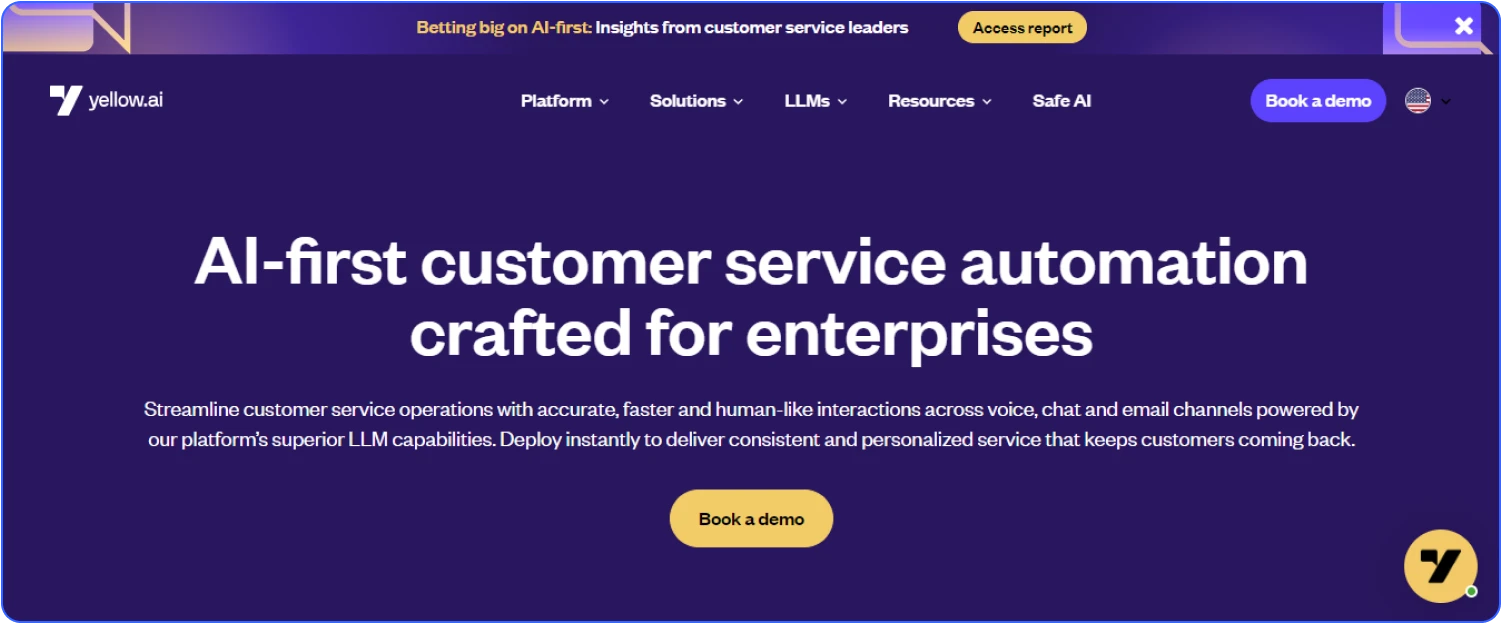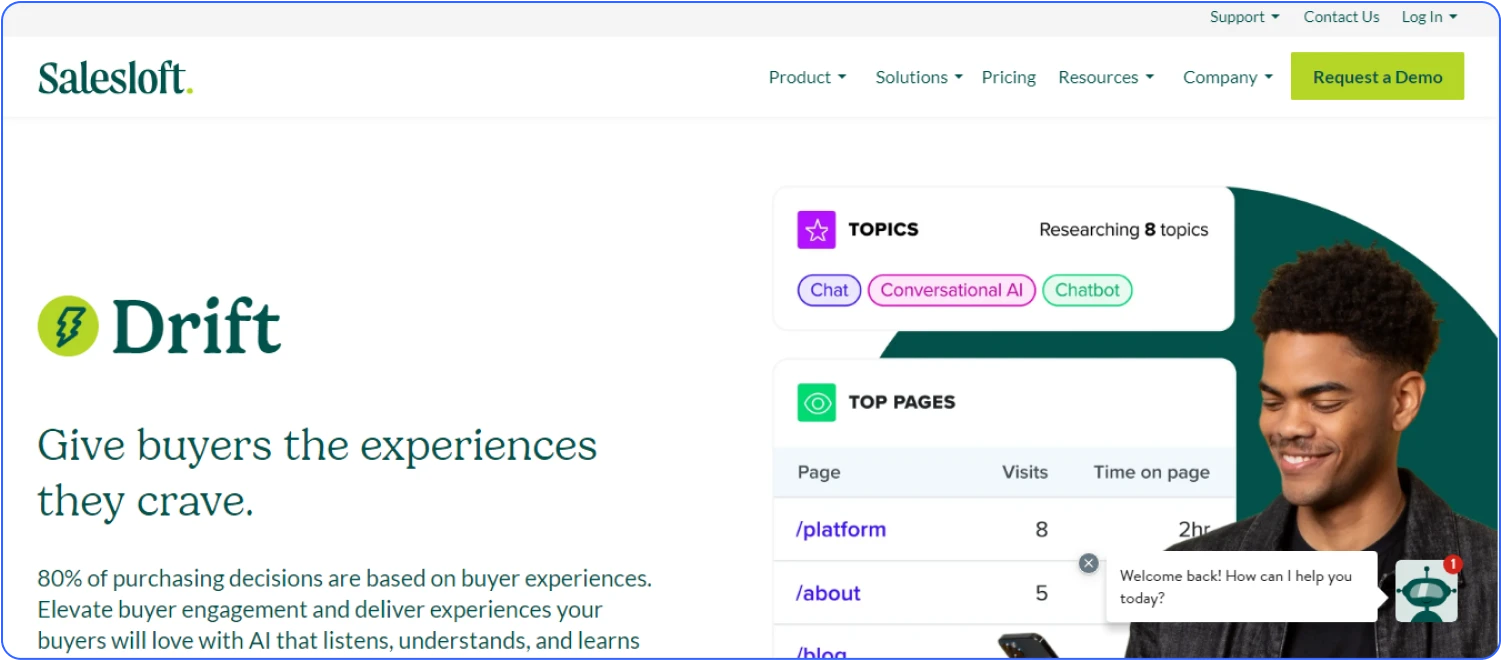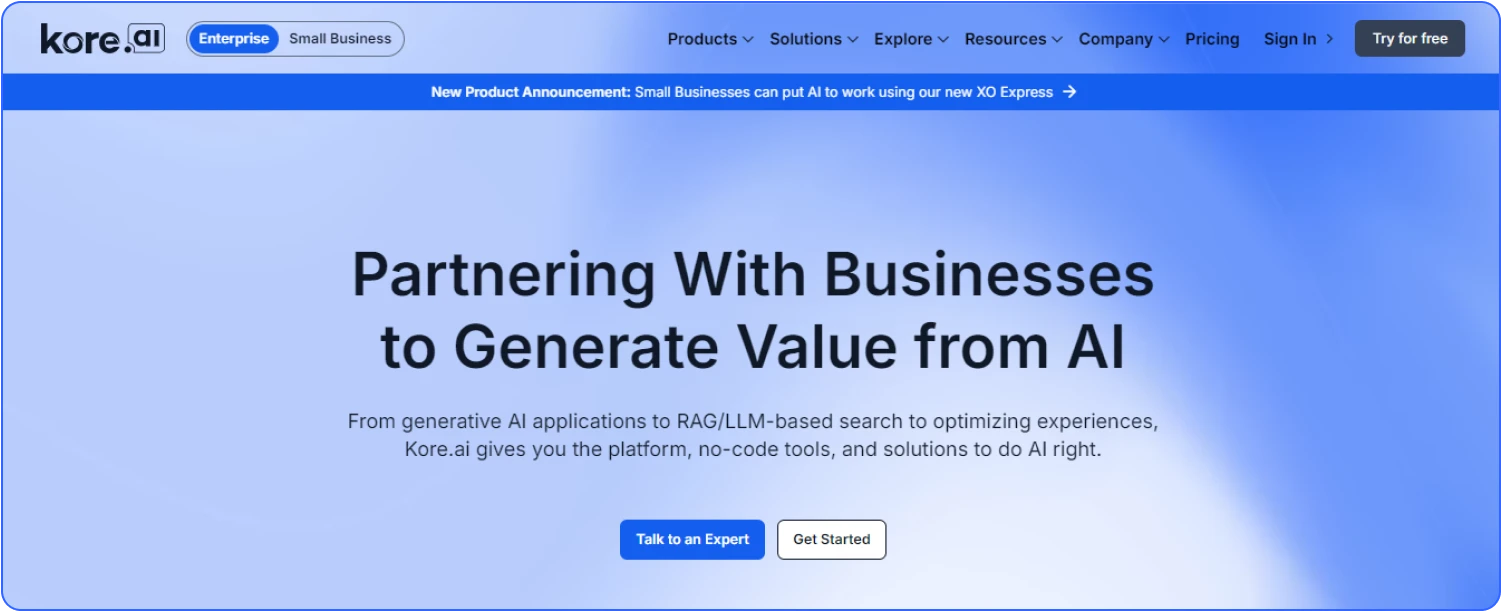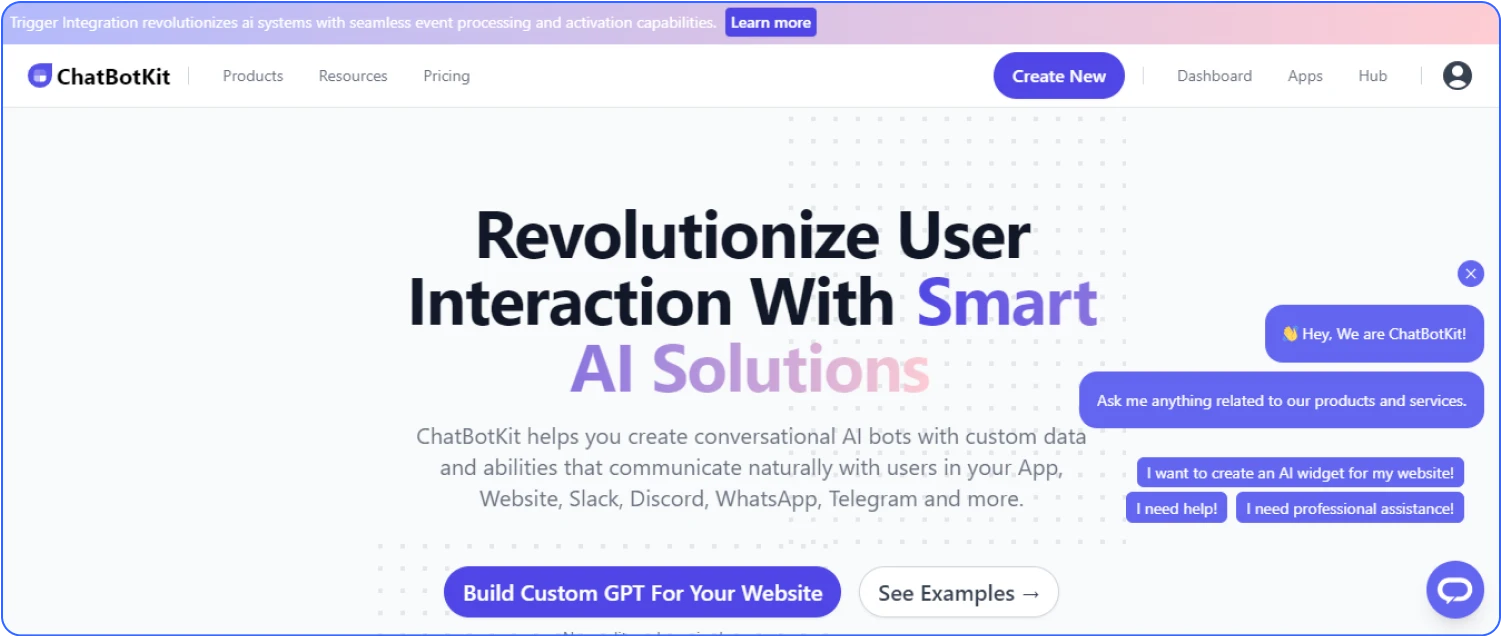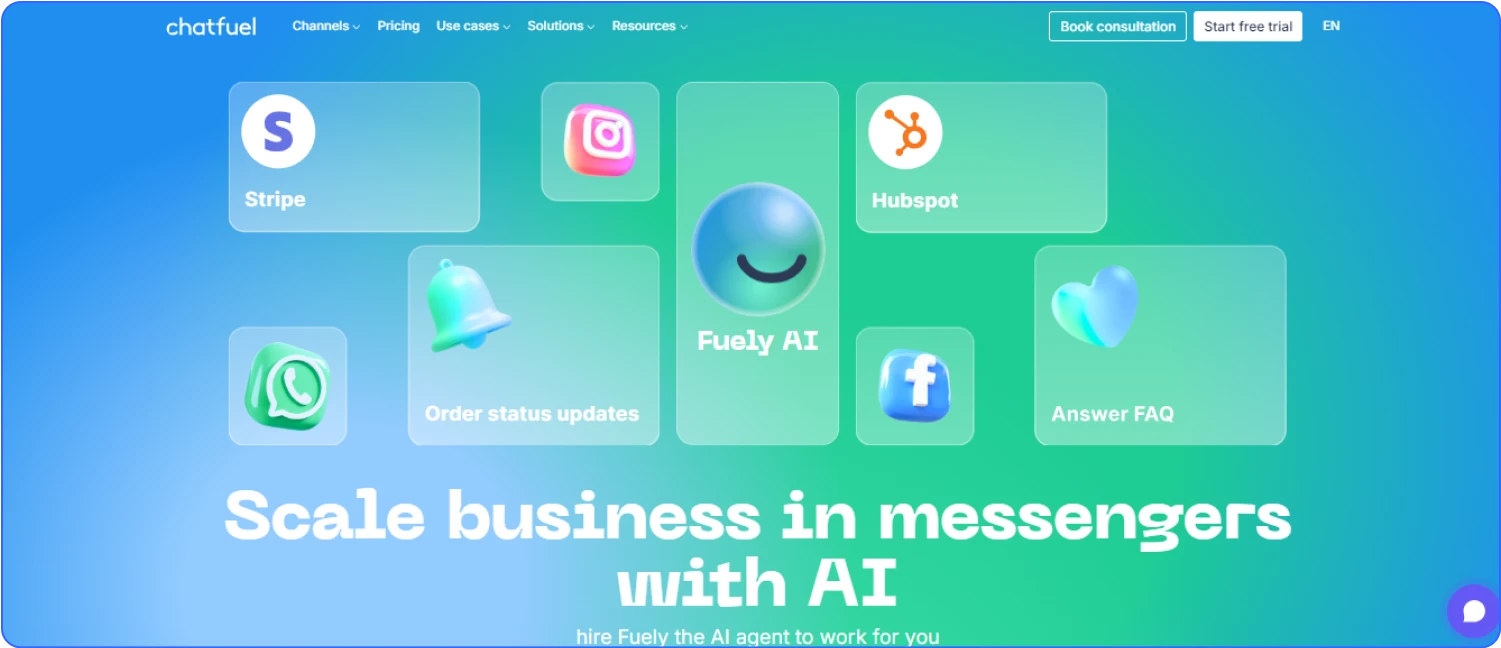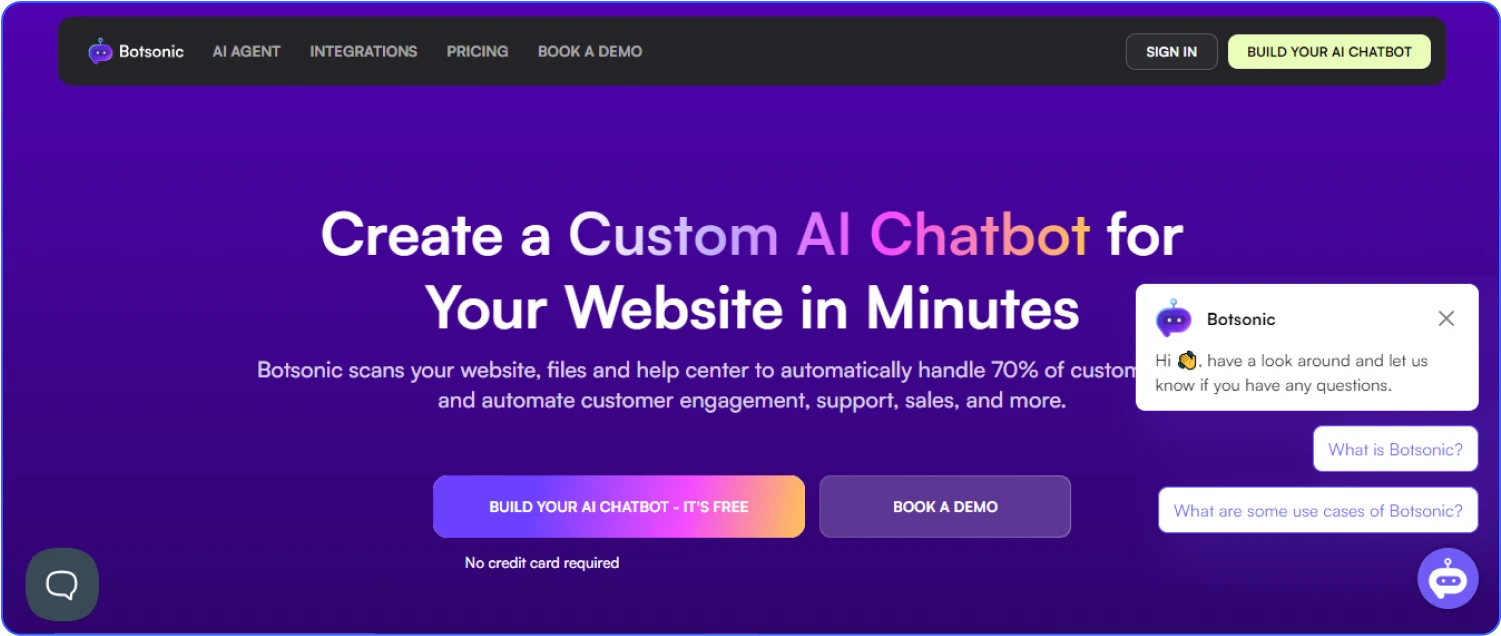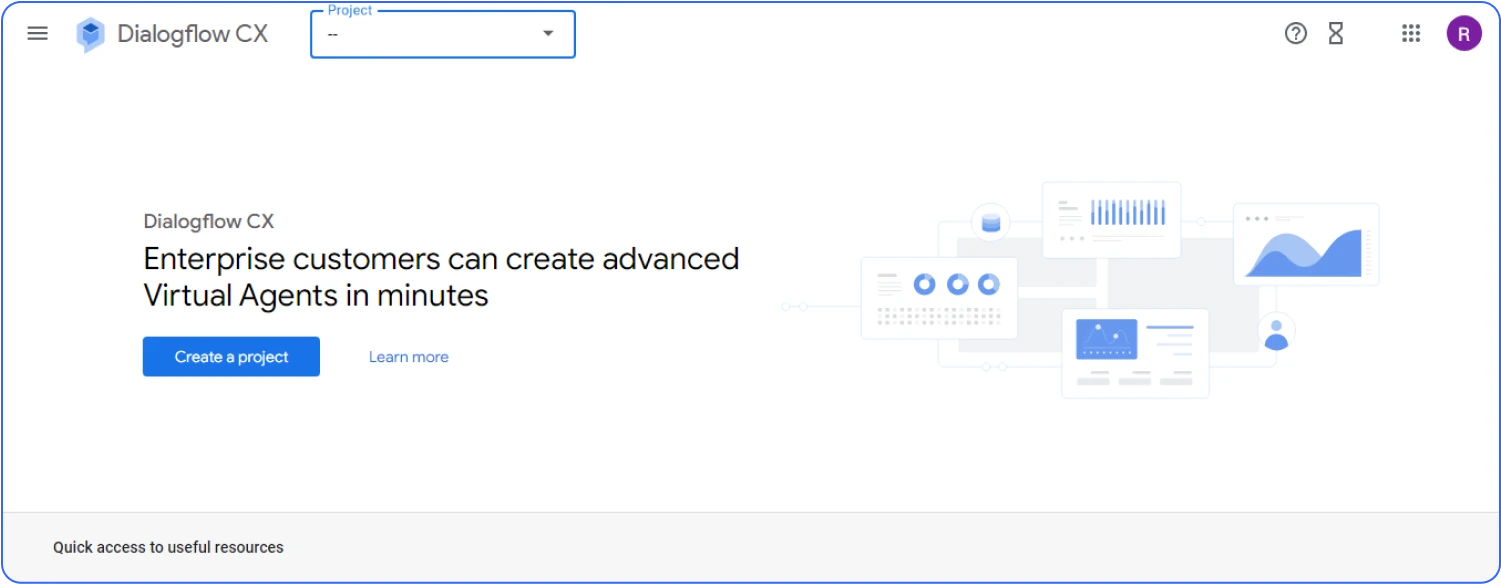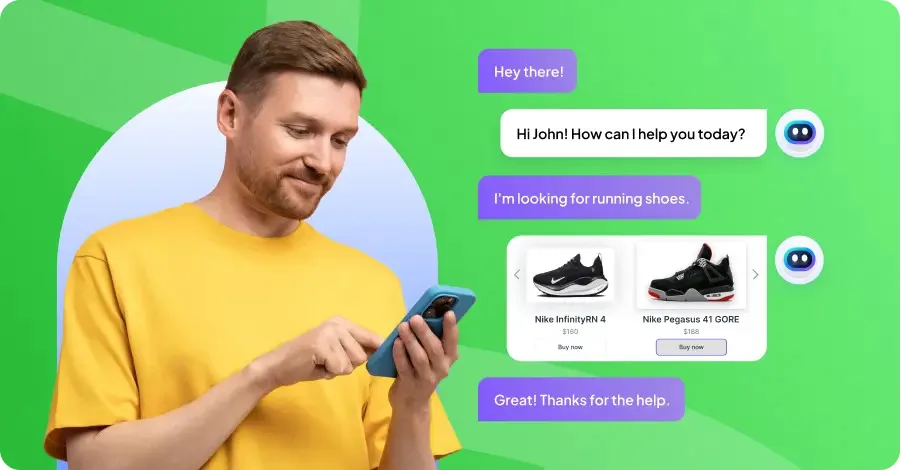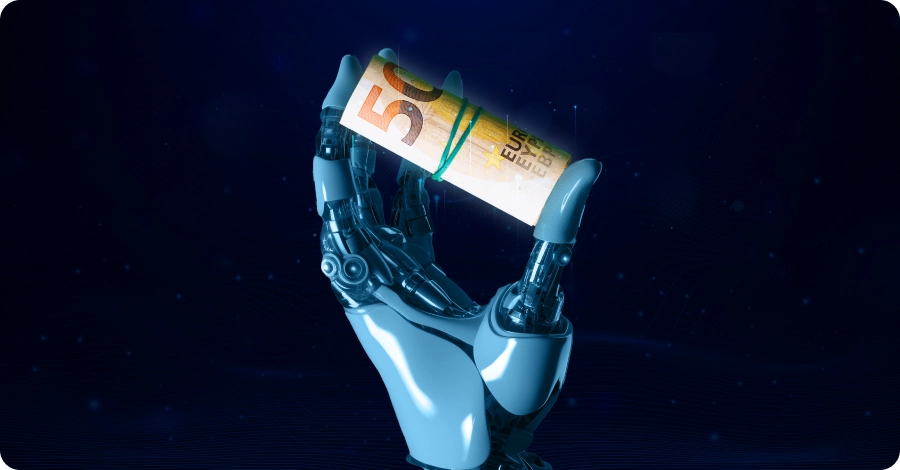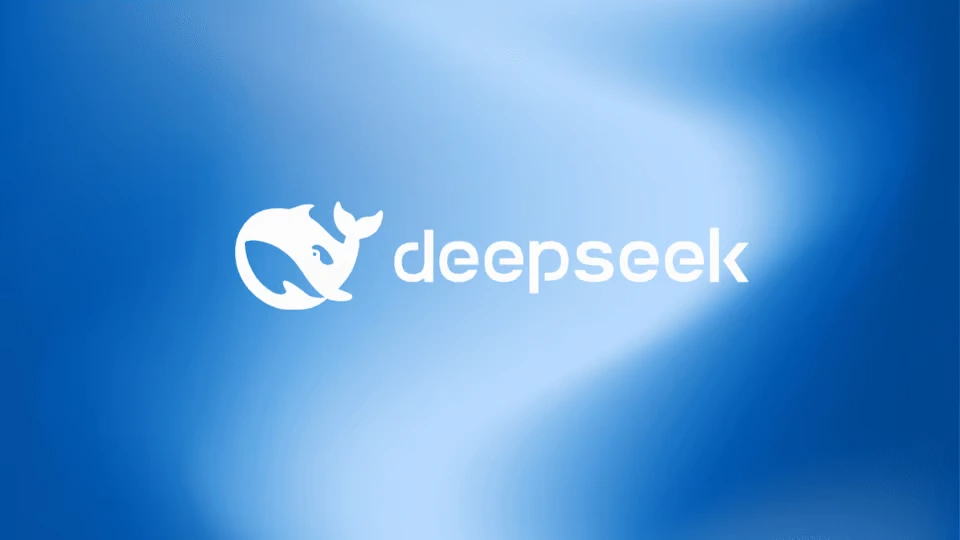12 Best & Most Popular Chatbot Platforms (2025): Top Reviewed
- May 11, 2021
- 25 mins read
- Listen
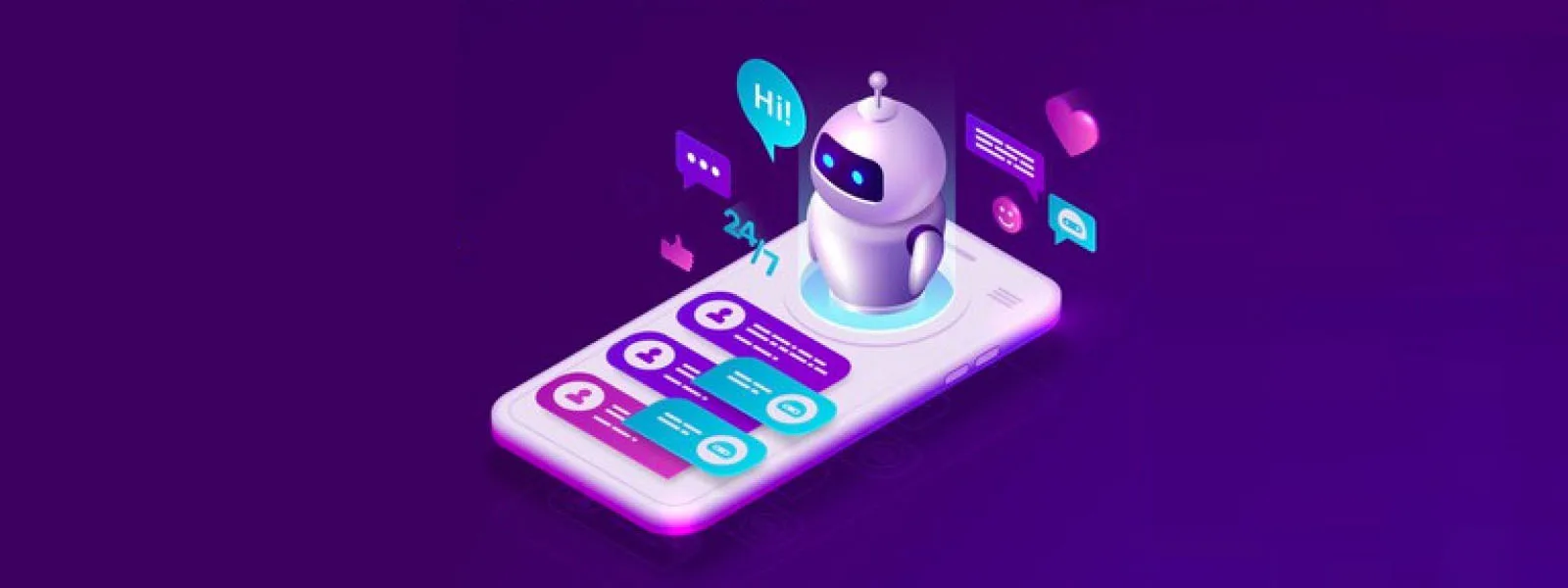
Table of Content
Chatbot platforms provide tools to ease user engagement through text or voice. These platforms offer features like NLP, conversation flows, integration channels, and analytics for monitoring performance. Recently, the number of chatbot platforms available has grown significantly.
How do you decide which one is the best fit for your needs? It’s not about choosing the most popular or feature-rich option. You need to think about what your specific needs are. You need to consider what you specifically require. For example, a chatbot that integrates smoothly with your existing customer service tools? Or do you need one that’s great at giving personalized suggestions?
The decision-making process can be challenging. Each platform has different features, pricing options, and levels of user-friendliness. Moreover, different organizations have different needs. Thus, we’ve put together a list of the 12 best chatbot platforms to help you decide. Let’s choose the best Chatbot platform for you!
What is a Chatbot Platform?
A Chatbot platform is software that allows to broaden the user base and empowers businesses or individuals to adopt Chatbots. A chatbot is a digital assistant that can communicate with users of a brand or company through text or voice messages by creating advanced material to answer most of the most frequent questions that may arise in the relationship between a business and its consumers.
It enables businesses to put a layer of automation or self-service in front of customers in a friendly and familiar way. With companies increasingly adding messaging channels to provide faster resolutions and always-on support, bots have quickly become a key component of any messaging strategy. They ensure customers get an instant response when an agent is busy helping other customers or watching Bridgerton.
Types of Chatbots
There are three main types of chatbots:
1. Rule-based chatbot
These are also known as “decision tree bots” and work with conversations based on predefined flows. They are therefore useful for maintaining basic conversations and solving simple and common problems.
2. AI chatbots
These chatbots rely on artificial intelligence to conduct human-like conversations using natural language processing (NLP) and can operate more or less on their own.
3. Hybrid chatbots
It combines the functions of a chatbot but allows a human to take over the conversation. In a hybrid model, some rules define whether the conversation is held by a bot or should be passed on to an agent.
Top 12 Chatbot Platforms with Rich Features and Performance
Based on our previous discussion, we’ve identified the top 12 chatbot platforms by considering key factors. These platforms include REVE Chat, IBM Watson, Microsoft Bot Framework, Amazon Lex, Intercom, Yellow.AI, Drift, Kore.ai, Botkit, Chatfuel, Botsonic, and Dialogflow (Google).
|
Rank |
Platform |
Key Features |
Unique Functionality |
Rationale |
|
1 |
REVE Chat |
|
Highly scalable with businesses of any size. Pre-built compliance modules for specific industries (e.g., finance, healthcare). |
Ideal for any business needing advanced chatbots across multiple channels. All-in-one solution with a rich range of features. |
|
2 |
IBM Watson |
|
Deep learning capabilities for complex tasks like question answering and information retrieval. |
Best for enterprises requiring powerful AI interactions. |
|
3 |
Microsoft Bot Framework |
|
Bot Connector Service allows connection to various messaging platforms (Telegram, Skype, etc.). |
Favored by developers for flexibility and customization within the Microsoft ecosystem. |
|
4 |
Amazon Lex |
|
Seamless integration with AWS services like Lambda and DynamoDB. |
Perfect for businesses already invested in the AWS cloud infrastructure. |
|
5 |
Intercom |
|
Unified customer messaging platform for managing chatbots and live chat alongside other channels. |
Superior for companies prioritizing a holistic customer engagement strategy. |
|
6 |
Yellow.AI |
|
Focus on multilingual support with pre-built integrations for various languages. |
Able to support customers from different regions. |
|
7 |
Drift |
|
Drift Video allows for video chat interactions within the chatbot experience. |
Stands out for its conversational marketing tools that nurture website visitors into leads. |
|
8 |
Kore.ai |
|
Virtual agent frameworks for building intelligent virtual assistants (VAs). |
Geared towards large organizations requiring robust VAs with multi-channel deployment. |
|
9 |
Botkit |
|
Modular architecture allows developers to build custom chatbots with specific functionalities. |
Perfect for developers seeking fine-grained control over chatbot creation. |
|
10 |
Chatfuel |
|
Drag-and-drop interface makes chatbot creation accessible for non-technical users. |
Easiest option for building basic Facebook Messenger chatbots without coding. |
|
11 |
Botsonic |
|
Focus on advanced AI capabilities like sentiment analysis and personality customization. |
A good choice for building sophisticated AI-powered chatbots. |
|
12 |
Dialogflow (Google) |
|
Pre-built agents for common tasks like appointment scheduling and weather updates. |
Streamlines development with pre-built features and Google Assistant integration. |
Top 12 Chatbot Platforms Based on Price Value
1. REVE Chat
REVE Chat is an AI-driven platform designed for customer engagement, offering IM-enabled live chat and various other features. The platform provides a ready-to-use chatbot platform that allows brands to create customized bots with zero codings based on business needs. You can deploy chatbots in a short time frame, train the bots, and measure their performance much quicker compared to a custom solution. It is ideal for enterprises or small businesses that want to manage conversations hassle-free.
Key features and capabilities:
- Visual Flow Builder: You can create your bot flow with the help of nodes and actions such as text, images, carousels, buttons, and others. You can set triggers as per the use case with no coding efforts. Plus, you can give a cute bot name as well.
- FAQs: Train your bot regularly by creating FAQs. It allows the bot to identify the user intent and have effective communication with the users.
- Human handover: You can set a live chat takeover in case the user asks a complex query that the bot is not able to answer.
- Sentiment analysis: The advanced sentiment analysis feature helps to train the chatbot against offensive and negative expressions. It trains the bot to nullify such responses and focus on the business objectives.
- Fallback option: You can set the fallback options such as alternate phone, email, or connect to the human agents. Identifying the break-up points in the conversation and defining an alternate solution is offered to the bot by the users.
Pros:
- Chatbot Builder: REVE Chat provides an intuitive chatbot builder to build the best AI chatbot.
- ML Training: Training your chatbots with normalization and bulk machine learning (ML)
- Bot to Human Handover: Empowers seamless handover between chatbot and live support to deliver the best conversational experience.
- Connectivity: Allows connecting with your Google calendar to book appointments & meetings.
- Seamless Integration: Integration is available with WhatsApp, Facebook Messenger, and Viber.
- Industry Oriented: Ideal chatbot for telecom, real estate, e-commerce, banking, and most other industries.
2. IBM Watson
IBM Watson offers a comprehensive suite of AI and machine learning services, including the Watsonx Assistant platform for chatbots. Watson Assistant helps businesses create intelligent virtual assistants that engage in natural, human-like conversations. It supports various channels like websites, mobile apps, messaging platforms, and voice assistants. This platform allows organizations to provide personalized customer experiences, automate routine tasks, and offer 24/7 support.
Key features and capabilities:
- Natural Language Understanding (NLU): Helps the chatbot understand and respond to user questions in everyday language.
- Dialog Management: Manages complex conversations, handling multiple topics and giving relevant information or actions based on what users say.
- Integration Capabilities: Connects to different backend systems and databases. It allows the chatbot to perform tasks like tracking orders, managing accounts, or providing product details.
- Machine Learning: Continuously improves its responses based on user interactions, making the chatbot smarter over time.
- Customization: Allows businesses to adjust the chatbot’s personality, tone, and language to fit their brand and audience.
- Analytics: Offers insights into how the chatbot is performing, user behavior, and conversation trends to enhance the chatbot’s effectiveness.
Pros:
- Powerful AI Capabilities: Watson offers a strong set of AI tools, including natural language processing, machine learning, and data analysis.
- Scalability: It can handle large amounts of data and complex tasks, making it ideal for enterprises.
- Customization: The platform allows for tailored solutions to meet specific business needs.
- Industry Focus: IBM has created Watson solutions for various industries, providing specialized tools and expertise.
- Integration: Watson can be integrated with existing systems and data sources.
- Continuous Learning: Its machine learning capabilities enable ongoing improvement over time.
Cons:
- Complexity: Implementing Watson can be complicated and requires technical expertise.
- Cost: The platform can be expensive, particularly for small businesses or startups.
- Dependency: Heavy reliance on Watson can lead to dependency on IBM.
- Data Quality: The accuracy of Watson’s results depends on the quality of the data it’s trained on.
- Learning Curve: Learning to use all the platform’s features takes time and effort.
- Vendor Lock-in: There’s a risk of becoming dependent on the IBM ecosystem.
3. Microsoft Bot Framework
The Microsoft Bot Framework is a powerful platform that enables developers to create, test, deploy, and manage intelligent chatbots. It offers a comprehensive set of tools, SDKs, and services to build bots capable of interacting with users naturally across various channels.
Key features and capabilities:
- Bot Builder SDK: Supports multiple languages and simplifies bot development.
- Azure Bot Service: Provides scalable cloud hosting and management for bots.
- Channel Integration: Enables bots to interact across platforms like Teams and Messenger.
- Natural Language Processing (NLP): Allows bots to understand and respond naturally to user queries.
- Analytics and Insights: Offers tools for tracking and optimizing bot performance.
- Customization and Extensibility: Let developers tailor bots to specific brand needs.
- Security and Compliance: Ensures bots adhere to security standards and regulatory requirements.
Pros:
- Comprehensive Toolset: Provides a wide array of tools for building, testing, deploying, and managing bots.
- Strong Integration: Seamlessly connects with Azure Cognitive Services for enhanced AI features.
- Channel Flexibility: Supports deployment across various platforms and channels.
- Active Community: A large, engaged developer community offers support and resources.
- Scalability: Manages increasing user loads and scales as needed.
- Open Source: Offers flexibility and customization options.
Cons:
- Steep Learning Curve: This can be challenging for developers who are new to chatbot development.
- Dependency on Azure: Using Azure services can raise costs, though it is not mandatory.
- Complexity for Simple Bots: This may be too complex for basic chatbot needs.
4. Amazon Lex
Amazon Lex is a service offered by Amazon Web Services (AWS) that allows developers to build conversational interfaces, such as chatbots, into their applications. Lex handles both text and speech input well which makes interactions feel natural. It can be deployed on websites and mobile apps, providing a consistent user experience. Lex also manages multi-turn conversations, allowing for meaningful dialogue. Its integration with AWS Lambda lets businesses run complex backend tasks smoothly. These features make Amazon Lex a powerful and flexible choice for building effective chatbots.
Key features and capabilities:
- Natural Language Understanding (NLU): Interprets user input and responds naturally.
- Speech Recognition: Supports both text and voice interactions.
- AWS Integration: Works seamlessly with other AWS services like AWS Lambda.
- Multi-Turn Conversations: Handles ongoing interactions and maintains context.
- Easy Deployment: Deploys chatbots across various platforms, including websites and mobile apps.
- Pre-Built Templates: Provides templates for common use cases to speed up development.
- Customizable Intents: Allows you to define specific actions and responses based on user inputs.
- Slot Filling: Collects and validates multiple pieces of information from users in a single conversation.
Pros
- User-Friendly: Lex’s intuitive interface allows developers of all skill levels to create chatbots.
- Rapid Development: Chatbots can be built quickly and efficiently.
- Seamless Integration: Easily connects with other AWS tools for enhanced functionality.
- Cost Efficient: Flexible pricing without upfront costs.
- Advanced Speech Recognition: Benefits from Amazon Alexa’s speech technology.
- Scalable Performance: Handles increasing user numbers without compromising quality.
Cons
- Customization Limitations: Extensive customization might require additional work.
- AWS Dependency: Reliance on the AWS ecosystem can restrict flexibility.
- Performance Issues: Potential delays due to Lambda function cold starts.
- Pricing Complexity: Understanding the cost structure can be challenging.
5. Intercom
Intercom is a customer messaging platform that helps businesses create chatbots for personalized interactions. It allows companies to build chatbots that handle customer questions, provide support, and guide users on websites and apps. Businesses appreciate Intercom for its ease of use and advanced automation features. The platform integrates with other tools and CRM systems which makes it simple to track interactions and gain insights.
Key features and capabilities:
- Effortless Chatbots: Build simple chatbots to answer frequently asked questions and automate repetitive tasks, freeing up your team’s time.
- Seamless Handover: Smoothly transition conversations from chatbots to human agents when a more complex issue arises.
- Knowledge at Your Bot’s Fingertips: Integrate your knowledge base with chatbots so they can access and provide accurate answers to customer inquiries.
- Targeted Interactions: Leverage customer segmentation to tailor chatbot responses and interactions for specific customer groups.
- Performance Insights: Gain valuable data through analytics to analyze chatbot performance and user interactions, enabling continuous improvement.
Pros
- All-in-One Solution: Offers a comprehensive platform that includes chatbots, live chat, email, and in-app messaging.
- Personalized Interactions: Enables tailored chatbot responses based on customer information.
- Smooth Handoffs: Easily transfers conversations between chatbots and human agents.
- Informative Assistant: Allows chatbots to access and share knowledge base content.
- Expanded Capabilities: Benefits from Intercom’s broader features for customer support, marketing, and sales.
Cons
- Basic Bot Functionality: Primarily suited for handling simple customer queries.
- Core Focus Elsewhere: Chatbots are not the primary focus of the platform.
- Potential Cost: Pricing might be higher than dedicated chatbot solutions for basic needs.
- Learning Curve: Requires time to master the platform’s full range of features.
6. Yellow.AI
Yellow.ai is a chatbot platform designed to automate customer service interactions. It offers a no-code interface for building and deploying chatbots across multiple channels like WhatsApp, Facebook Messenger, and website chat. The platform leverages generative AI for more human-like conversations. It provides features for knowledge management, advanced analytics, security, and more.
Key features and capabilities:
- Multichannel Support: Yellow.ai integrates with websites, mobile apps, social media, and messaging apps. It supports platforms like WhatsApp, Facebook Messenger, and Slack.
- AI-Powered Conversations: The platform uses advanced AI and NLP. It understands and responds to customer queries in a human-like way. This enhances customer experience with accurate replies.
- Customization and Scalability: Businesses can customize the chatbots to match their brand voice. The platform is scalable and suitable for enterprises of all sizes.
- Analytics and Reporting: Yellow.ai offers detailed analytics and reporting features. Businesses can track bot performance, customer interactions, and engagement. This data helps improve the chatbot’s effectiveness.
- Integration with Existing Systems: The platform integrates with CRM, ERP, and other business systems. This ensures seamless data flow and enhanced functionality.
- Omnichannel Experience: Yellow.ai provides consistent experiences across multiple channels. Customers can switch between platforms without losing context.
Pros:
- Multi-Channel Integration: Supports WhatsApp, Facebook Messenger, SMS, and websites.
- Strong NLP and AI: Delivers accurate and smart responses.
- Customizable Workflows: Easily tailor chatbot interactions.
- Comprehensive Analytics: Provides valuable insights across all channels.
- Highly Scalable: Suitable for businesses of all sizes.
Cons:
- Higher Cost: This can be expensive for small businesses.
- Internet Dependent: Limited functionality without internet access.
7. Drift
Drift is a top chatbot platform offering real-time chat, AI-powered chatbots, email integration, and lead routing. It also features a meeting scheduler, conversation analytics, and personalized chat experiences. Drift enhances customer engagement, streamlines communication, and boosts sales efficiency across your website. Ideal for businesses seeking powerful customer interaction tools.
Key features and capabilities:
Drift is designed to enhance customer engagement and streamline communication. Here are some of its key features and capabilities:
- AI-Powered Chatbots: Automate customer interactions with smart chatbots that can answer common queries, qualify leads, and guide users through your website 24/7.
- Real-Time Live Chat: Engage visitors instantly with real-time chat. Let your sales team interact with prospects as they browse your site.
- Lead Routing: Automatically route incoming leads to the appropriate sales representative based on factors like location, company size, or specific interests, ensuring a quick and relevant follow-up.
- Email and Chat Integration: Integrate Drift with your existing email system to ensure seamless communication across channels.
- Personalized Messaging: Customize chatbot responses and live chat interactions based on visitor data.
- CRM Integration: Sync Drift with popular CRM systems like Salesforce and HubSpot to automatically log interactions and update customer records.
Pros:
- Real-Time Communication: Enables instant chat with website visitors.
- Personalization: Offers targeted messaging based on visitor behavior.
- Easy Integration: Works well with CRM and marketing tools.
- Lead Qualification: Automates lead scoring and routing.
- User-Friendly Interface: Simple and intuitive for users.
Cons:
- High Cost: Pricing can be expensive for small businesses.
- Limited Features on Lower Plans: Some advanced features are only available in higher-tier plans.
- Learning Curve: Can take time to master all features.
8. Kore.ai
Kore.ai is an advanced chatbot platform offering AI-powered conversational solutions. It supports omnichannel deployment, seamless integration with business tools, and customizable workflows. Kore.ai excels in natural language processing (NLP), enabling efficient automation for customer support, HR, and IT operations, making it ideal for enterprises seeking scalable and intelligent chatbot solutions.
Key features and capabilities:
Here are its key features and capabilities:
- Multi-Channel Support: Seamlessly integrates with popular channels like web, mobile apps, and social media.
- Natural Language Understanding (NLU): Accurately interprets user intent with advanced NLU.
- Conversational AI: Provides a human-like interaction experience through context-aware conversations.
- Omnichannel Experience: Delivers consistent user experiences across all platforms.
- Enterprise-Grade Security: Ensures data protection with high-level security features.
- Analytics and Insights: Provides detailed analytics to optimize bot performance.
- Integration Capabilities: Easily integrates with CRM, ERP, and other enterprise systems.
Pros:
- Advanced NLP: Strong natural language processing capabilities for accurate understanding of user intent.
- Omnichannel Support: Seamless deployment across multiple channels like web, mobile, and social media.
- Customizable Workflows: Flexible workflows to fit specific business needs and processes.
- Enterprise-Grade Security: Robust security features, making it suitable for large enterprises.
- Integration: Easy integration with various business tools like CRM, ERP, and HR systems.
Cons of Kore.ai:
- Cost: Higher pricing, which might be a barrier for small to medium-sized businesses.
- Limited Pre-built Templates: Fewer ready-to-use templates compared to some other platforms, requiring more custom development.
9. Botkit
Botkit is an open-source chatbot development framework that simplifies the process of building bots for platforms like Slack, Facebook Messenger, and more. It offers flexible customization options, easy integration with APIs, and a rich library of plugins.
Key features and capabilities:
- Developer-Friendly Framework: Built with Node.js, Botkit offers a modular and extensible framework that allows developers to create bots with custom behaviors.
- Rich Messaging Support: Botkit supports a variety of message formats, including text, images, buttons, and more.
- Integration with Popular Platforms: Easily integrates with messaging platforms like Slack, Facebook Messenger, Microsoft Teams, and more.
- Middleware and Plugin System: Botkit provides middleware and plugins for handling specific tasks, such as natural language processing or API integrations, making it easier to add advanced features to your bot.
- Built-in Debugging Tools: Offers built-in tools for testing and debugging bots.
- Community and Open Source: As an open-source project, Botkit has a strong community that contributes to its development.
- Conversation Management: Manages complex conversations through an easy-to-use dialogue system.
- Extensive Documentation: Botkit comes with comprehensive documentation, tutorials, and examples.
Pros:
- Open-source: Free to use with full access to the codebase.
- Flexible customization: Easily customizable for specific needs.
- Multi-platform support: Works with Slack, Facebook Messenger, and more.
- Rich plugin library: Offers a variety of plugins to extend functionality.
- Active community: Strong developer community for support and collaboration.
Cons:
- Steeper learning curve: Requires coding knowledge, not beginner-friendly.
- Limited built-in analytics: Basic analytics; advanced tracking needs additional setup.
- Maintenance required: As an open-source tool, ongoing updates and maintenance are needed.
10. Chatfuel
Chatfuel is a user-friendly chatbot platform designed primarily for Facebook Messenger and Instagram. It requires no coding, making it accessible for beginners. Chatfuel offers easy drag-and-drop functionality, powerful automation features, and seamless integration with popular tools.
Key features and capabilities:
Chatfuel is a user-friendly chatbot platform designed for creating bots without coding. Here are its key features and capabilities:
- No-Code Bot Building: Chatfuel allows users to create chatbots through a drag-and-drop interface
- Integration with Facebook Messenger and Instagram: Specifically designed to work seamlessly with Facebook Messenger and Instagram.
- Audience Segmentation and Targeting: Chatfuel offers advanced audience segmentation. This ensures more personalized and effective communication.
- Automated Responses and Flows: The platform enables the creation of automated response flows.
- Analytics and Reporting: Chatfuel provides built-in analytics tools that track user interactions, message performance, and conversion rates.
- Multi-Channel Support: Besides Facebook Messenger and Instagram, Chatfuel can be integrated with other platforms, offering flexibility in reaching your audience across different channels.
- AI-Powered Features: Chatfuel includes AI-driven capabilities like natural language processing (NLP) to better understand and respond to user queries.
- Customizable Templates: The platform offers a variety of pre-built templates that can be customized to fit different use cases, from customer support to lead generation, speeding up the bot development process.
Pros of Chatfuel:
- No coding is required, making it beginner-friendly.
- Seamless integration with Facebook Messenger and Instagram.
- Offers powerful automation features.
- Supports multilingual chatbots for global reach.
Cons of Chatfuel:
- Limited customization options compared to other platforms.
- Advanced features can be costly.
- Primarily focused on Facebook and Instagram, limiting multi-channel support.
11. Botsonic
Botsonic is an AI-powered chatbot platform designed for easy integration and customization. It allows businesses to create conversational experiences without coding. With its intuitive interface, Botsonic supports multilingual capabilities, robust analytics, and seamless integration with various messaging platforms, making it ideal for enhancing customer engagement and support.
Key features and capabilities:
Botsonic is an AI-powered chatbot platform designed for businesses seeking advanced automation and personalization in customer interactions. Here are its key features and capabilities:
- Easy Integration with Websites and Apps: Botsonic can be easily integrated into websites and mobile apps.
- Automated Customer Support: Botsonic excels at automating customer support, handling common inquiries, troubleshooting, and even escalating complex issues to human agents when necessary.
- Analytics and Insights: The platform provides comprehensive analytics, tracking chatbot performance, user interactions, and conversion rates.
- Scalability for Growing Businesses: Designed to scale with your business, Botsonic can handle increasing volumes of interactions without compromising on performance.
Pros of Botsonic:
- User-Friendly Interface: Easy to use, even for non-technical users.
- Multilingual Support: Handles conversations in multiple languages.
- Customizable: Offers strong customization options to match brand needs.
- Robust Analytics: Provides detailed insights into chatbot performance.
- Seamless Integration: Easily integrates with various messaging platforms.
Cons of Botsonic:
- Limited Advanced Features: Lacks some advanced features found in other platforms.
- Pricing: This can be expensive for smaller businesses.
- Customer Support: Response times may be slow for lower-tier plans.
12. Dialogflow (Google)
Dialogflow is a powerful platform for building conversational interfaces like chatbots and voice apps. It leverages advanced natural language processing to deliver smooth and intuitive user interactions. Here are its key features and capabilities:
- Advanced Natural Language Understanding (NLU): Dialogflow excels in understanding user intent through its advanced NLU engine.
- Multi-Channel Deployment: It supports integration across various platforms, including websites, mobile apps, messaging apps like Facebook Messenger, and WhatsApp, and voice assistants like Google Assistant and Alexa.
- Customizable Entities and Intents: Users can define custom entities and intents that suit their specific business needs. This flexibility allows for highly tailored chatbot experiences that can handle specific industry jargon or business scenarios.
- Rich Media Support: The platform supports various response types, including text, images, carousels, and quick replies, enhancing the interaction experience and making conversations more engaging for users.
Pros of Dialogflow:
- Advanced NLP: Excellent natural language processing for accurate user intent recognition.
- Multi-Platform Integration: Easily integrates with platforms like Google Assistant, Facebook Messenger, and more.
- Multi-Language Support: Supports numerous languages, making it versatile globally.
- Easy to Use: User-friendly interface with strong documentation for quick setup.
- Scalable: Suitable for small projects and large, complex deployments.
Cons of Dialogflow:
- Limited Customization: Advanced customization requires coding knowledge, which might be a barrier for non-developers.
- Session Management Issues: Some users report challenges with managing sessions effectively.
- Complexity with Dialogflow CX: The CX version has a steeper learning curve, making it less accessible.
Key Things To Consider Before Selecting the Best Chatbot Solution
Even so, chatbots are excellent customer engagement channels, many users find that chatbots fail to resolve their issues and they prefer talking to a support agent. This perception can be greatly improved by following certain tips on chatbot design to make a successful chatbot.
The first & foremost is to define your business goals and outline the key use case. It helps in building the best AI chatbot that aligns with your customer needs.
Understanding the customer flow is crucial to learn what they are looking for. It helps in learning customer intent and designing the bot flow to deliver better CX.
Identifying the customer journey touchpoints gives clarity to deploy chatbots across those channels to engage customers promptly 24×7 and make their journey seamless.
You need to define which part of the customer journey you want to automate (For eg. lead generation, FAQs) It will help streamline the workflow for better productivity.
Certainly, not everything can be automated, and knowing at what point your users might face issues & look for human support helps to set fallback options.
Benefits of Chatbot for Customer Service
The efficiency and usefulness of a solution like this, need to incorporate technologies into multiple sectors and industries. Because it still depends on the workforce to resolve most of the requirements associated with the relationship with consumers becomes evident.
If your company has not yet invested in these resources, do not worry! We are going to show the 5 most outstanding benefits of chatbots so that you can make the decision to automate customer service and take it to the next level.
Take note!
1. Operation at All Hours
In the first instance, a functionality that companies can hardly execute is the luxury of remaining operational 24/7 due to various factors, especially due to the impossibility of having teams of operators working during nights and early mornings.
With chatbots, this is not a problem, since their systems and algorithms keep them “on” all day long without slowing down.
In this way, a company could have its doors open —figuratively speaking— continuously without stopping, which would increase business opportunities and the number of requests attended to exponentially.
2. Reducing Customer Acquisition Costs (CAC)
CAC has been one of the weakest links in companies for years.
In fact, producing new customers is substantially more expensive for companies than keeping existing ones, but what happens when a company is emerging and all its customers are new? Obviously, costs rise and it is very difficult to reach profitability levels.
In this sense, the use of a chatbot can help lower this figure to a large extent thanks to its ability to perform sales tasks and significantly reduce the expenses that the company must incur to gain a consumer.
The chatbot can process hundreds of requests at the same time, a task that would be impossible for a human advisor, even for 20 of them: it is a great advantage when it comes to streamlining your sales and marketing process.
3. Increased Net Promoter Score (NPS)
NPS is an indicator of customer loyalty and satisfaction linked to the likelihood that they will recommend your business to others: in other words, it is the probability that your customers will be your first sales promoters.
Of course, truly differentiated customer service can be a great solution to offer your consumers a satisfactory experience that turns them not only into loyal customers of the company but into promoters of it.
4. Immediate attention
Chatbots immediately attend to most of a client’s requests. For this reason, this solution is so profitable and logical, allowing a user to receive the necessary guidance in less than 10 seconds. It ultimately boosts the customer satisfaction and experience.
5. The basis of business intelligence
Business intelligence is the ability of some tools to decode customer behavior to use it in favor of the company. In this way, an organization could predict market trends and gain a competitive advantage over other businesses in the segment.
Indeed, the Chatbot is equipped with technology that allows it to collect, sort, and analyze a large amount of information associated with customer relations to find patterns, define behaviors, and identify business opportunities thanks to the tracking of the actions that people execute within it.
Consequently, a company could plan and design business strategies that position it ahead of its competitors in a precise manner and with enough time to put everything in order and efficiently take advantage of the opportunity.
Selecting the Best Chatbot Platform for Your Business
Now that it is clear that before you choose your best chatbot platform it is very important to identify your business objectives, understand the bot flow, and identify the touchpoints and the points to automate. It will help to build the best conversational AI chatbot for your business.
Not following the chatbot’s best practices and not doing it right, will have a negative impact on the overall customer experience. Customers will not be satisfied with the bot’s performance and prefer interacting with it.
The top bot-building platforms discussed above can help you make your own chatbots to interact with your prospects and customers. There will be more chatbot platform tools emerging but identifying the core use cases will help you to meet your end goals with the appropriate bot builder.
Are you interested in learning more about this and other related topics? We recommend that you sign up today.

